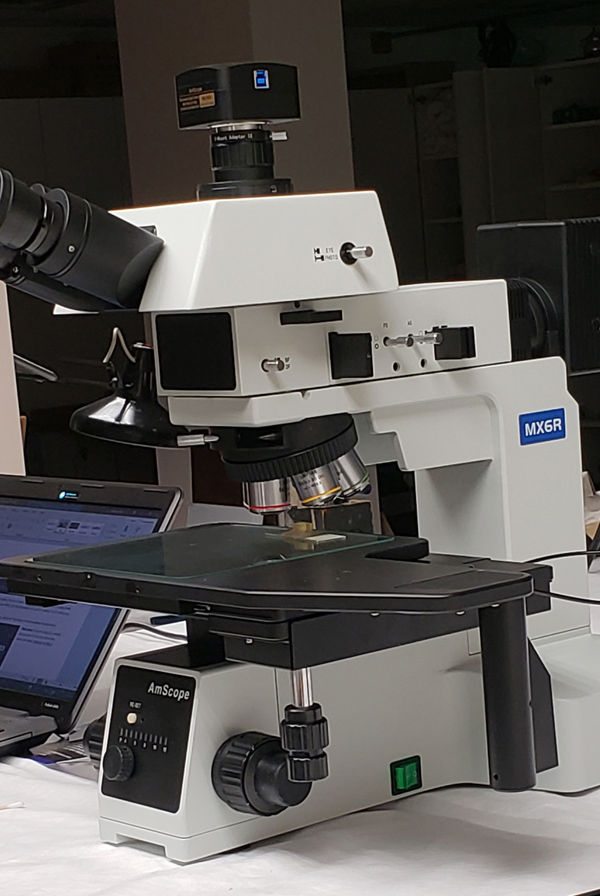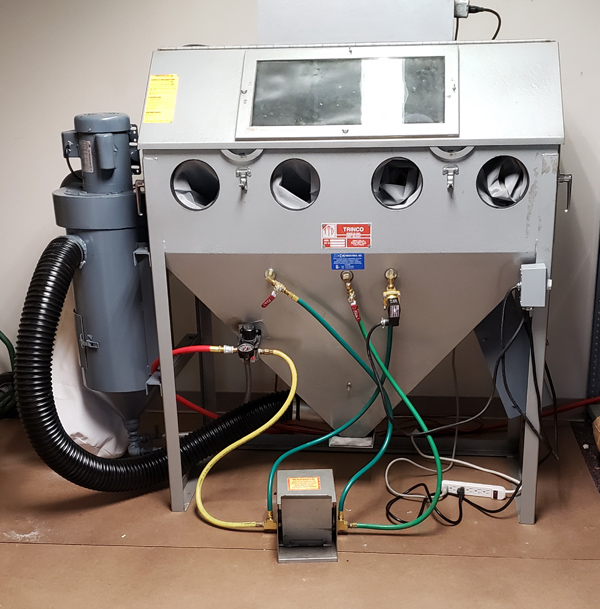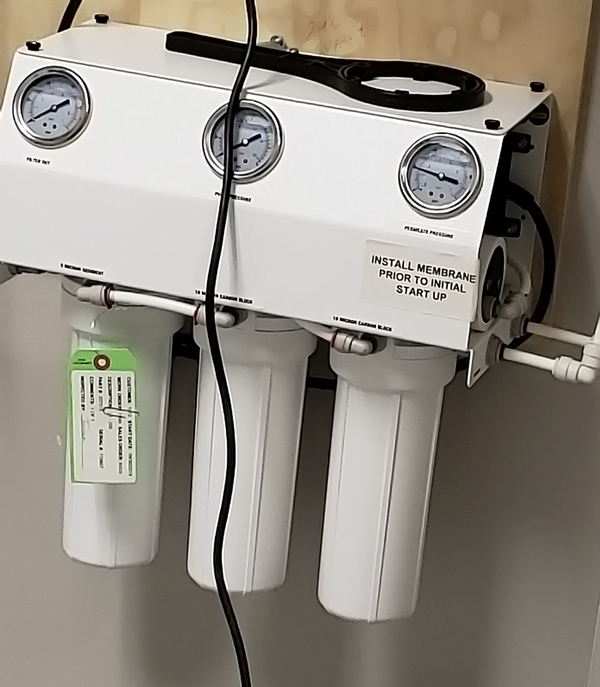In 2019, Hagley approved a capital budget for the Collections Department to upgrade the Objects Conservation Laboratory at the Hall of Records. The Objects Conservator, Ebenezer Kotei, had asked for the funds to enhance the functionality of certain tools used in the performance of his work and to upgrade safety in the use of chemicals.
More chemicals are used in the Objects Conservation Laboratory than anywhere else at Hagley; the laboratory prepares its own metal polish, microcrystalline wax paste, resins, and certain protective coatings. Chemicals, some very harmful, others not so much, are used in all these preparations. Chemicals are used for cleaning and degreasing objects and for spray-coatings. The use of a fume hood in the laboratory helps to conduct chemical fumes away from the user. But the single blower that ran the fume hood also provided exhaust for two tabletop exhaust points, leading to the reduction in the efficiency of fumes removal for both the hood and two trunk lines. The capital budget funds made it possible to isolate and dedicate the existing exhaust blower to the fume hood, while providing three independently-run blowers for three tabletop exhaust points. The budget also made it possible to replace a thirty-year-old defective refrigerator with a modern chemical laboratory refrigerator, so that bulky quantities of cellulose nitrate coatings and other such less stable solvents, coatings, and materials could be refrigerated.
A new, modern stereomicroscope capable of polarized light microscopy (PLM) has been installed. This means that the laboratory can examine, identify, measure, interpret, and evaluate objects in the collection such as natural and synthetic fibers, plastics, and metals. The built-in digital camera will make it possible to photograph, document, and save cross-section samples of paint layers on corroding metals such as the rococo cast iron benches, and paint layers on Hagley’s historic buildings. Not only is it necessary to properly document the history of the paints used on these artifacts, but the information also complements the oral and documented history when making historic restoration decisions.

The abrasives blasting machine in the laboratory was significantly upgraded so it can perform the following additional functions: an auto-rotating basket making it possible to set a timer and leave the machine on to clean small corroded parts; two additional nozzles were installed, including a pencil tip nozzle for finer abrasives cleaning of smaller, more delicate objects; instead of the more common dust extractor used till now, the machine has been retrofitted with a new cyclone device that will extract the dust and also circulates the abrasives through the system for a continuous, more efficient operation.

Conservation laboratories require very clean water for their operations. The bulky, hard-to-manage water softening system in the laboratory was replaced with a high-efficiency Reverse Osmosis machine. This will also provide clean water for use in the electric irons when ironing white table cloths and napkins for the Eleutherian Mills residence dining room, or provide clean water for use in humidifiers if needed.

Ebenezer Kotei is the Objects Conservator at Hagley Museum and Library.
